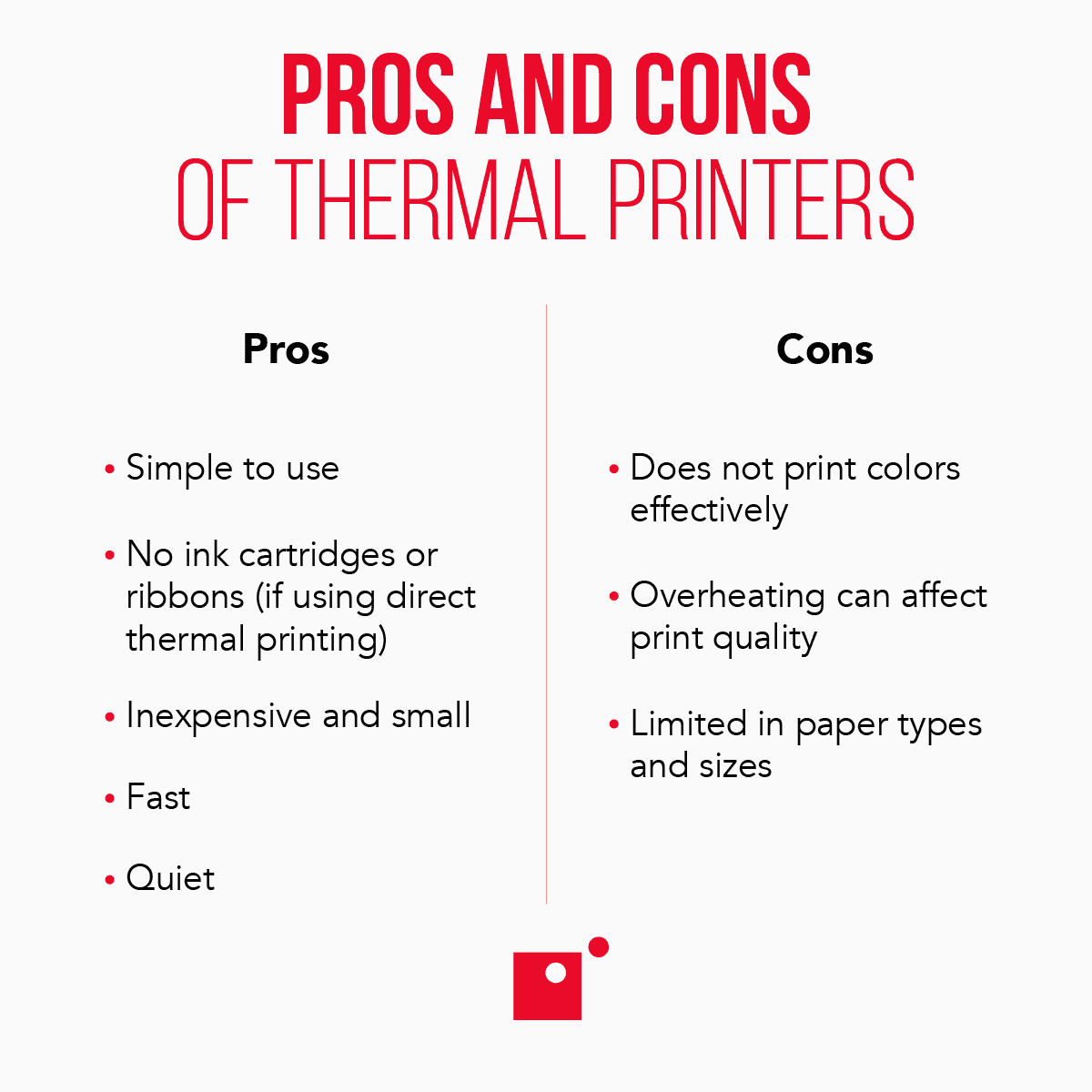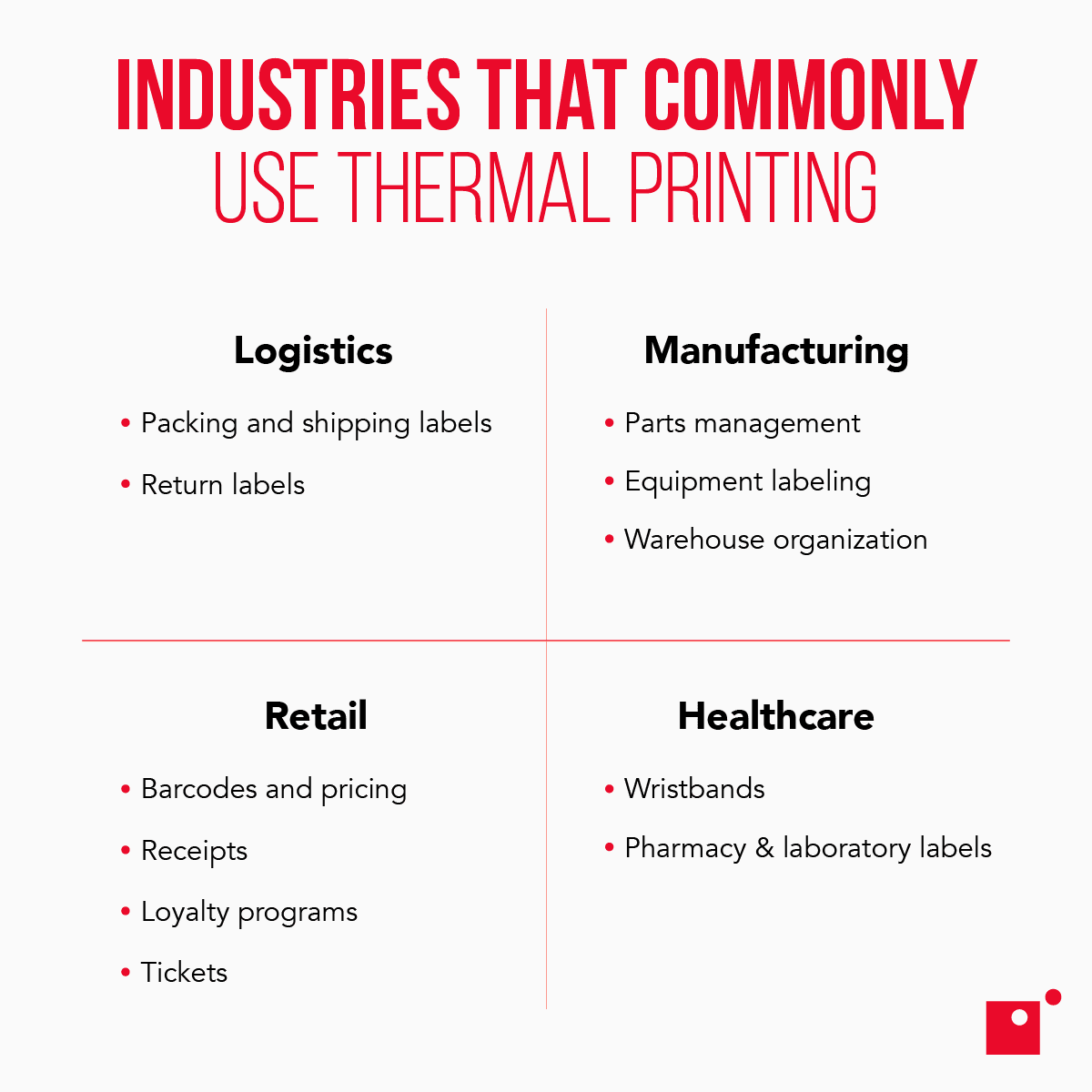A printer that prints quickly and effectively without ink may sound like a myth, but the technology behind thermal printers gives businesses the ability to print receipts, labels, and more instantly.
Explore how businesses across multiple industries—from retail to logistics—rely on these efficient, cost-effective devices and learn more about how thermal printers work in this blog.
Looking for a new printer to bolster your fleet? Visit the Impact Store to browse our high-quality machines today.
What Is a Thermal Printer?
A thermal printer uses a heated printhead to produce images or text on paper.
It operates by selectively heating thermal paper or an ink ribbon in specific areas. The process involves a thermal print head that applies heat and pressure to the paper, causing the coated sections to darken and create the desired output.
Thermal printers are favored for their simplicity, speed, and reliability.
They’re used extensively in industries like retail, healthcare, logistics, and manufacturing for their cost-effectiveness and ability to generate high-resolution prints very quickly.
How Does a Thermal Printer Work?
The first thing to understand about how thermal printers work is that there are two types of thermal printers:
- Direct Thermal Printers—This type of thermal printer does not use ink, toner, or ribbons. Instead, the printhead applies pressure heat onto the surface of thermal paper. The paper’s reaction to the heat and pressure is to turn black to produce the desired image or text.
- Thermal Transfer Printers—This type of thermal printer uses a wax-coated ink ribbon to press onto the surface of the paper, the wax then melts and exposes the ink which takes hold and dries. This type of thermal printer allows for higher quality (and longer lasting) print jobs but requires a ribbon that must be replaced.
Is a Thermal Printer Inkless?
If using direct thermal printing, then yes! Direct thermal printers rely on thermal paper to create images and text. The paper turns black when heat and pressure are applied.
What are Thermal Printers Used for in Business?
Direct thermal printing is commonly used for receipts, labels, and tickets. Odds are, if you’ve ever shopped at a retail store, your receipt was printed using a direct thermal printer because they can print fast and require very little upkeep aside from replacing the paper roll. This way, operations go uninterrupted throughout the day.
Thermal transfer printing is used when more durable prints are needed, making this form of thermal printing suitable for labels, barcodes, and packaging.
Should Your Business Invest in a Thermal Printer?
Whether or not your business should invest in a thermal printer over other types of printers depends almost entirely on your use case. Industries like retail and logistics need labels printed instantly and have very little room for downtime. In the case of printing receipts or labels, you need them when you need them.
There’s little tolerance for downtime when customers or timelines are so important. In this case, a thermal printer would be the best choice.
This is similar in many industries like healthcare and manufacturing.
If printing in large quantities, bigger sizes, or various colors, an office or production printer might be a better option.
Document Management and Digital Records
Another option is to go as paperless as possible. In our digital world, paper-intensive things like receipts, tickets, or coupons can be digitized. Retailers can use software to deliver everything straight to a customer’s phone or to their own app.
Not only does this save money on supplies and allow your business to be more eco-friendly, but it can be more convenient for your customers. To test drive this initiative, consider offering customers a choice between paper or digital.
Invest in Your Printing Equipment
Looking at updating your printer fleet or changing up your business’ printing capabilities? Impact has decades of experience helping businesses do this very thing.
Take a look at our current printer offerings at the Impact Store, or explore how managed print services can help improve how your business handles physical documents.


